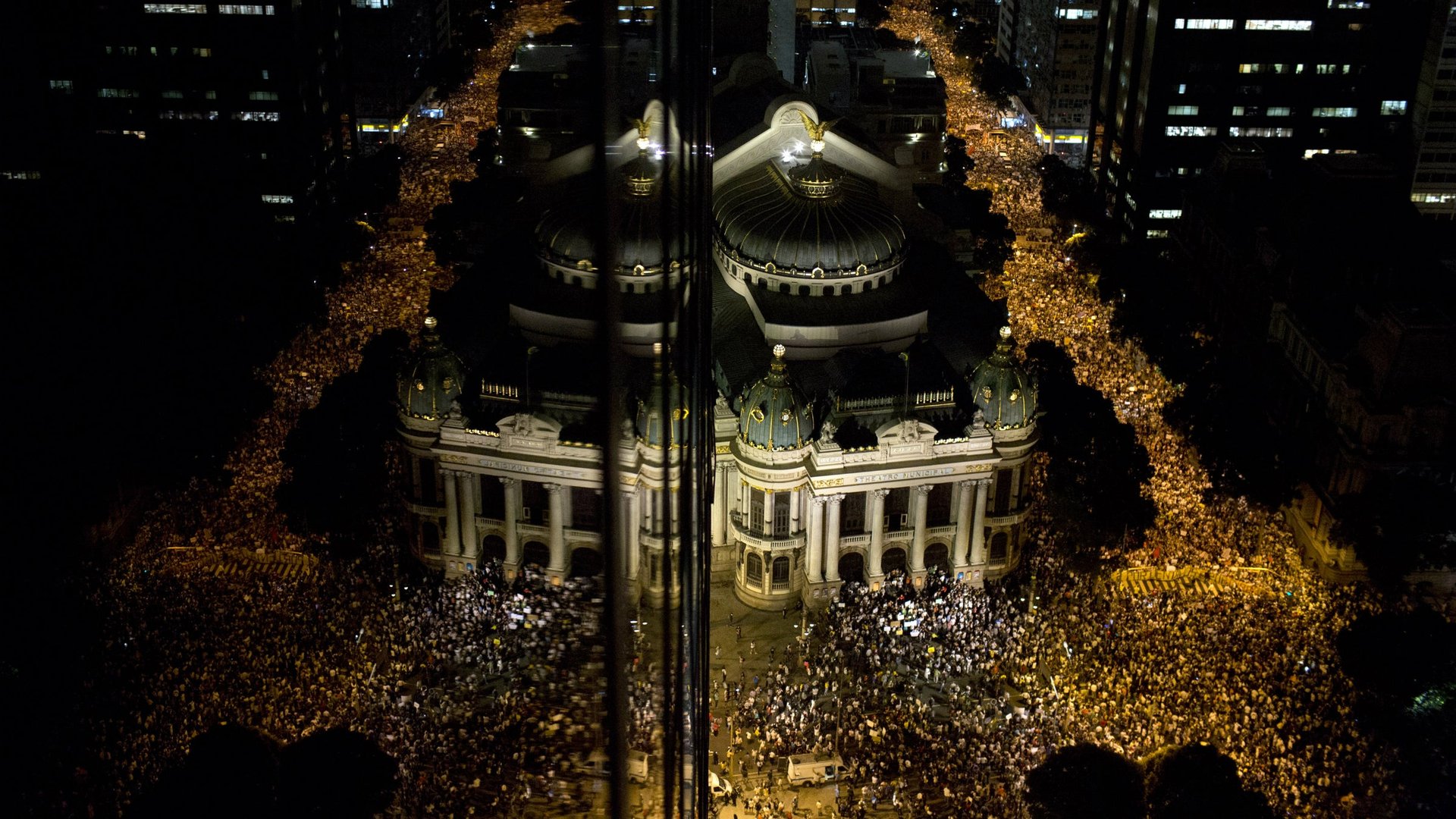For want of a bus fare…What are Brazilians really protesting about?
Monday’s civil unrest in Brazil had the slightest of sparks—a $0.09 rise in the price of a single bus fare in Sao Paulo. Officials justified the rise, pointing out that it was well below inflation, but it still triggered the biggest protests Brazil has seen in over 20 years—up to 200,000 people on the streets in 11 cities.


Monday’s civil unrest in Brazil had the slightest of sparks—a $0.09 rise in the price of a single bus fare in Sao Paulo. Officials justified the rise, pointing out that it was well below inflation, but it still triggered the biggest protests Brazil has seen in over 20 years—up to 200,000 people on the streets in 11 cities.
But Brasilia and Rio de Janeiro residents are not on the streets out of solidarity with Sao Paulo bus users. To them, the issue is synonymous with a much larger problem: the state of Brazil’s economy.
First quarter economic growth was a mere 1.9%, industrial production shrank 0.3% and inflation was 6.46%, prompting the central bank to buck the global trend and raise interest rates, further dampening household spending. The country’s economy is suffering, and external reasons are only partly to blame.
President Dilma Rousseff, who inherited an economy growing at 7.5%, has made an effort to stimulate recovery by hiking up public spending, minimum wages and encouraging bank lending. Her attempts at reform have been welcomed by Brazilians—who gave her a near-80% approval rating in March—but her influence is limited and her popularity falling, as it becomes increasingly clear that Brazil is stuck.
Many protesters are upset about what they see as a disconnect between high taxes and poor public services. “We’re massacred by the government’s taxes, yet when we leave home in the morning to go to work, we don’t know if we’ll make it home alive because of the violence,” one protester told the Associated Press. ”We don’t have good schools for our kids. Our hospitals are in awful shape. Corruption is rife. These protests will make history and wake our politicians up to the fact that we’re not taking it anymore.”
Lavish public spending on the 2014 World Cup stadium has further annoyed Brazilians. The $14.3 billion project includes an over-budget stadium in an isolated city surrounded by rainforest. Worse, it is being built with 6,700 tonnes of steel smelted in Portugal and shipped half way across the world, to be constructed using American and Chinese cranes.
So when the streets began to fill and word on social media spread, the disillusioned masses appeared, many spurred on by videos of a heavy-handed and violent police response. And it all started with a $0.09 fare hike.